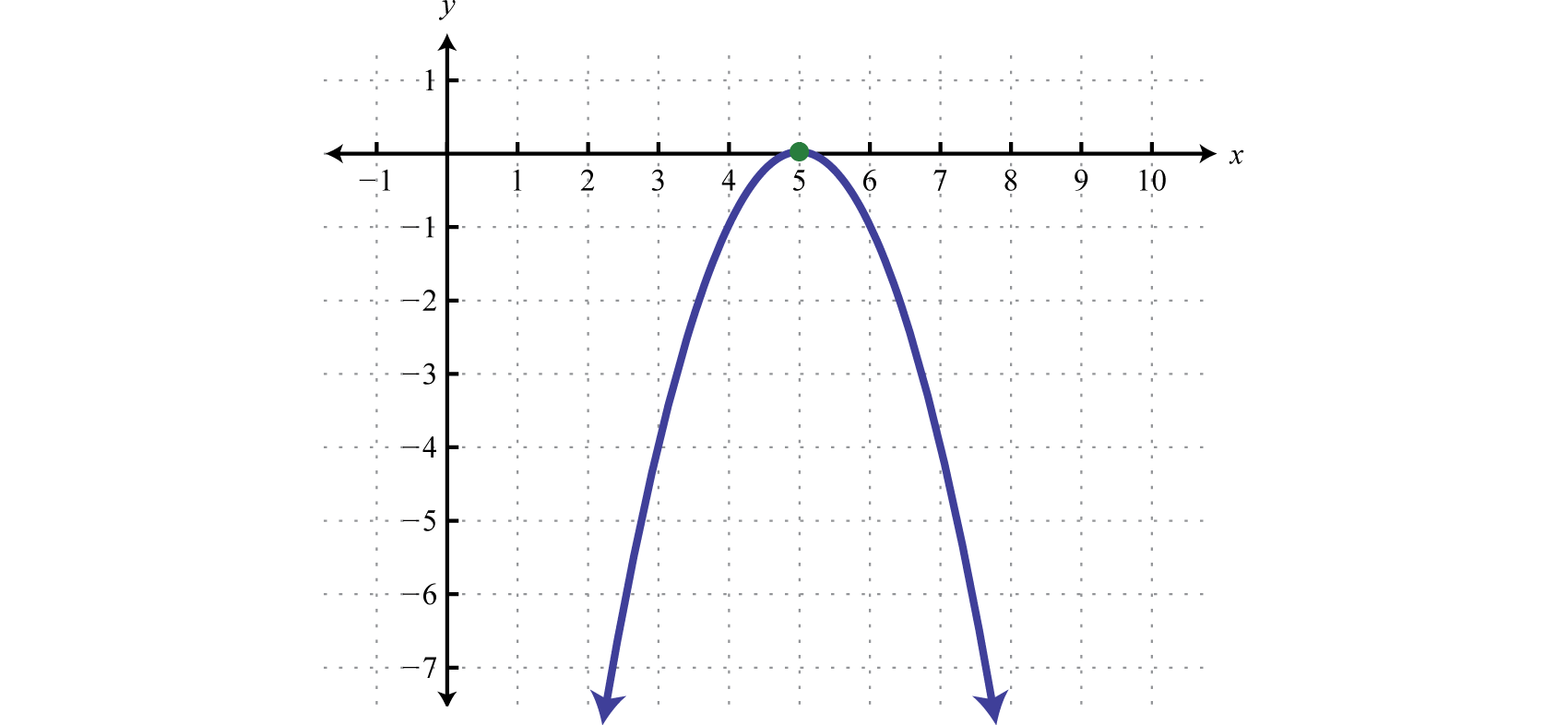

We have learned various techniques for factoring polynomials with up to four terms. The challenge is to identify the type of polynomial and then decide which method to apply. The following outlines a general guideline for factoring polynomials.
general guidelines for factoring polynomials
Step 1: Check for common factors. If the terms have common factors, then factor out the greatest common factor (GCF).
Step 2: Determine the number of terms in the polynomial.
Step 3: Look for factors that can be factored further.
Step 4: Check by multiplying.
If a binomial is both a difference of squares and a difference cubes, then first factor it as difference of squares. This will result in a more complete factorization. In addition, not all polynomials with integer coefficients factor. When this is the case, we say that the polynomial is prime.
If an expression has a GCF, then factor this out first. Doing so is often overlooked and typically results in factors that are easier to work with. Furthermore, look for the resulting factors to factor further; many factoring problems require more than one step. A polynomial is completely factored when none of the factors can be factored further.
Factor \(54 x ^ < 4 >- 36 x ^ < 3 >- 24 x ^ < 2 >+ 16 x\).
Solution
This four-term polynomial has a GCF of \(2x\). Factor this out first.
\(54 x ^ < 4 >- 36 x ^ < 3 >- 24 x ^ < 2 >+ 16 x = 2 x \left( 27 x ^ < 3 >- 18 x ^ < 2 >- 12 x + 8 \right)\)
Now factor the resulting four-term polynomial by grouping and look for resulting factors to factor further.

Answer
\(2 x ( 3 x - 2 ) ^ < 2 >( 3 x + 2 )\). The check is left to the reader.
Factor: \(x ^ < 4 >- 3 x ^ < 2 >- 4\).
Solution
This trinomial does not have a GCF.
\(\begin x ^ < 4 >- 3 x ^ < 2 >- 4 & = \left( x ^ < 2 >\quad\right) \left( x ^ < 2 >\quad \right) \\ & = \left( x ^ < 2 >+ 1 \right) \left( x ^ < 2 >- 4 \right) \quad\color < Difference\: of\: squares >\\ & = \left( x ^ < 2 >+ 1 \right) ( x + 2 ) ( x - 2 ) \end\)
The factor \(\left( x ^ < 2 >+ 1 \right)\) is prime and the trinomial is completlely factored.
Answer:
\(\left( x ^ < 2 >+ 1 \right) ( x + 2 ) ( x - 2 )\)
Factor: \(x ^ < 6 >+ 6 x ^ < 3 >- 16\).
Solution
Begin by factoring \(x ^ < 6 >= x ^ < 3 >\cdot x ^ < 3 >\) and look for the factors of \(16\) that add to \(6\).
\(\begin x ^ < 6 >+ 6 x ^ < 3 >- 16 & = \left( x ^ < 3 >\quad \right) \left( x ^ < 3 >\quad \right) \\ & = \left( x ^ < 3 >- 2 \right) \left( x ^ < 3 >+ 8 \right)\quad \color < sum\:of\:cubes >\\ & = \left( x ^ < 3 >- 2 \right) ( x + 2 ) \left( x ^ < 2 >- 2 x + 4 \right) \end\)
The factor \(\left( x ^ < 3 >- 2 \right)\) cannot be factored any further using integers and the factorization is complete.
Answer:
\(\left( x ^ < 3 >- 2 \right) ( x + 2 ) \left( x ^ < 2 >+ 2 x + 4 \right)\)
Factor: \(9 x ^ < 4 >+ 17 x ^ < 2 >- 2\)
Answer
\(( 3 x + 1 ) ( 3 x - 1 ) \left( x ^ < 2 >+ 2 \right)\)
In this section, we will review a technique that can be used to solve certain polynomial equations. We begin with the zero-product property 20 :
\(a⋅b=0\) if and only if \(a=0\) or \(b=0\)
The zero-product property is true for any number of factors that make up an equation. In other words, if any product is equal to zero, then at least one of the variable factors must be equal to zero. If an expression is equal to zero and can be factored into linear factors, then we will be able to set each factor equal to zero and solve for each equation.
Solve: \(2 x ( x - 4 ) ( 5 x + 3 ) = 0\).
Solution
Set each variable factor equal to zero and solve.
To check that these are solutions we can substitute back into the original equation to see if we obtain a true statement. Note that each solution produces a zero factor. This is left to the reader.
Answer:
The solutions are \(0, 4\), and \(\frac\).
Of course, most equations will not be given in factored form.
Solve: \(4 x ^ < 3 >- x ^ < 2 >- 100 x + 25 = 0\).
Solution
Begin by factoring the left side completely.
\(\begin 4 x ^ < 3 >- x ^ < 2 >- 100 x + 25 & = 0 \quad\color \\ x ^ < 2 >( 4 x - 1 ) - 25 ( 4 x - 1 ) & = 0 \\ ( 4 x - 1 ) \left( x ^ < 2 >- 25 \right) & = 0\quad\color \\ ( 4 x - 1 ) ( x + 5 ) ( x - 5 ) & = 0 \end\)
Set each factor equal to zero and solve.
Answer:
The solutions are \(\frac, −5\), and \(5\).
Using the zero-product property after factoring an equation that is equal to zero is the key to this technique. However, the equation may not be given equal to zero, and so there may be some preliminary steps before factoring. The steps required to solve by factoring 21 are outlined in the following example.
Solve: \(15 x ^ < 2 >+ 3 x - 8 = 5 x - 7\).
Solution
Step 1: Express the equation in standard form, equal to zero. In this example, subtract \(5x\) from and add \(7\) to both sides.
\(\begin < l > < 15 x ^ < 2 >+ 3 x - 8 = 5 x - 7 > \\ < 15 x ^ < 2 >- 2 x - 1 = 0 > \end\)
Step 2: Factor the expression.
Step 3: Apply the zero-product property and set each variable factor equal to zero.
Step 4: Solve the resulting linear equations.
Answer:
The solutions are \(\frac\) and \(\frac\). The check is optional.
Solution
This quadratic equation appears to be factored; hence it might be tempting to set each factor equal to \(4\). However, this would lead to incorrect results. We must rewrite the equation equal to zero, so that we can apply the zero-product property.
\(\begin < r > < ( 3 x + 2 ) ( x + 1 ) = 4 >\\ < 3 x ^ < 2 >+ 3 x + 2 x + 2 = 4 > \\ < 3 x ^ < 2 >+ 5 x + 2 = 4 > \\ < 3 x ^ < 2 >+ 5 x - 2 = 0 > \end\)
Once it is in standard form, we can factor and then set each factor equal to zero.
Answer:
The solutions are \(\frac\) and \(−2\).
Recall that any polynomial with one variable is a function and can be written in the form,
\(f ( x ) = a _ < n >x ^ < n >+ a _ < n - 1 >x ^ < n - 1 >+ \cdots + a _ < 1 >x + a _ < 0 >\)
A root 22 of a function is a value in the domain that results in zero. In other words, the roots occur when the function is equal to zero, \(f(x)=0\).
Find the roots: \(f ( x ) = ( x + 2 ) ^ < 2 >- 4\).
Solution
To find roots we set the function equal to zero and solve.
\(\begin f ( x ) & = 0 \\ ( x + 2 ) ^ < 2 >- 4 & = 0 \\ x ^ < 2 >+ 4 x + 4 - 4 & = 0 \\ x ^ < 2 >+ 4 x & = 0 \\ x ( x + 4 ) & = 0 \end\)
Next, set each factor equal to zero and solve.
\(\begin x = 0 \quad \text < or >\quad x + 4 = 0 \\ x = - 4 \end\)
We can show that these \(x\)-values are roots by evaluating.
\(\begin f ( 0 ) & = ( 0 + 2 ) ^ < 2 >- 4 \\ & = 4 - 4 \\ & = 0 \color\end\) \(\begin f ( - 4 ) & = ( - 4 + 2 ) ^ < 2 >- 4 \\ & = ( - 2 ) ^ < 2 >- 4 \\ & = 4 - 4 \\ & = 0 \color\end\)
Answer:
The roots are \(0\) and \(−4\).
If we graph the function in the previous example we will see that the roots correspond to the \(x\)-intercepts of the function. Here the function \(f\) is a basic parabola shifted \(2\) units to the left and \(4\) units down.

Find the roots: \(f ( x ) = x ^ < 4 >- 5 x ^ < 2 >+ 4\).
Solution
To find roots we set the function equal to zero and solve.
\(\begin f ( x ) & = 0 \\ x ^ < 4 >- 5 x ^ < 2 >+ 4 & = 0 \\ \left( x ^ < 2 >- 1 \right) \left( x ^ < 2 >- 4 \right) & = 0 \\ ( x + 1 ) ( x - 1 ) ( x + 2 ) ( x - 2 ) & = 0 \end\)
Next, set each factor equal to zero and solve.
\(\begin x + 1 & = 0 \\ x & = - 1 \end\) or \(\begin < r > < x - 1 = 0 >\\ < x = 1 >\end\) or \(\begin x + 2 & = 0 \\ x & = - 2 \end\) or \(\begin x - 2 & = 0 \\ x & = 2 \end\)
Answer:
The roots are \(−1, 1, −2\), and \(2\).
Graphing the previous function is not within the scope of this course. However, the graph is provided below:

Notice that the degree of the polynomial is \(4\) and we obtained four roots. In general, for any polynomial function with one variable of degree \(n\), the fundamental theorem of algebra 23 guarantees \(n\) real roots or fewer. We have seen that many polynomials do not factor. This does not imply that functions involving these unfactorable polynomials do not have real roots. In fact, many polynomial functions that do not factor do have real solutions. We will learn how to find these types of roots as we continue in our study of algebra.
Find the roots: \(f ( x ) = - x ^ < 2 >+ 10 x - 25\).
Solution
To find roots we set the function equal to zero and solve.
\(\begin f ( x ) & = 0 \\ - x ^ < 2 >+ 10 x - 25 & = 0 \\ - \left( x ^ < 2 >- 10 x + 25 \right) & = 0 \\ - ( x - 5 ) ( x - 5 ) & = 0 \end\)
Next, set each variable factor equal to zero and solve.
\(\begin x - 5 & = 0 \quad\quad\text < or >& x - 5 = 0 \\ & = 5 \quad &x= 5 \end\)
A solution that is repeated twice is called a double root 24 . In this case, there is only one solution.
Answer:
The previous example shows that a function of degree \(2\) can have one root. From the factoring step, we see that the function can be written
In this form, we can see a reflection about the \(x\)-axis and a shift to the right \(5\) units. The vertex is the \(x\)-intercept, illustrating the fact that there is only one root.

Find the roots of \(f ( x ) = x ^ < 3 >+ 3 x ^ < 2 >- x - 3\).
Answer
Assuming dry road conditions and average reaction times, the safe stopping distance in feet is given by \(d ( x ) = \frac < 1 > < 20 >x ^ < 2 >+ x\), where \(x\) represents the speed of the car in miles per hour. Determine the safe speed of the car if you expect to stop in \(40\) feet.
Solution
We are asked to find the speed \(x\) where the safe stopping distance \(d(x)=40\) feet.
To solve for \(x\), rewrite the resulting equation in standard form. In this case, we will first multiply both sides by \(20\) to clear the fraction.
Next factor and then set each factor equal to zero.
\(\begin x ^ < 2 >+ 20 x - 800 & = 0 \\ ( x + 40 ) ( x - 20 ) & = 0 \\ x + 40 & = 0\quad or\quad \:x-20=0 \\ x & = - 40\quad \quad\quad\quad x=20 \end\)
The negative answer does not make sense in the context of this problem. Consider \(x=20\) miles per hour to be the only solution.
Answer:
\(20\) miles per hour
We can use the zero-product property to find equations, given the solutions. To do this, the steps for solving by factoring are performed in reverse.
Find a quadratic equation with integer coefficients, given solutions \(\frac\) and \(\frac\).
Solution
Given the solutions, we can determine two linear factors. To avoid fractional coefficients, we first clear the fractions by multiplying both sides by the denominator.
\(\begin x & = - \frac < 3 > < 2 >\\ 2 x & = - 3 \\ 2 x + 3 & = 0 \end\) or \(\begin x & = \frac < 1 > < 3 >\\ 3 x & = 1 \\ 3 x - 1 & = 0 \end\)
The product of these linear factors is equal to zero when \(x=\frac\) or \(x=\frac\).
Multiply the binomials and present the equation in standard form.
\(\begin < r > < 6 x ^ < 2 >- 2 x + 9 x - 3 = 0 > \\ < 6 x ^ < 2 >+ 7 x - 3 = 0 > \end\)
We may check our equation by substituting the given answers to see if we obtain a true statement. Also, the equation found above is not unique and so the check becomes essential when our equation looks different from someone else’s. This is left as an exercise.
Answer:
\(6 x ^ < 2 >+ 7 x - 3 = 0\)
Find a polynomial function with real roots \(1, −2\), and \(2\).
Solution
Given solutions to \(f(x)=0\) we can find linear factors.
Apply the zero-product property and multiply.
\(\begin ( x - 1 ) ( x + 2 ) ( x - 2 ) & = 0 \\ ( x - 1 ) \left( x ^ < 2 >- 4 \right) & = 0 \\ x ^ < 3 >- 4 x - x ^ < 2 >+ 4 & = 0 \\ x ^ < 3 >- x ^ < 2 >- 4 x + 4 & = 0 \end\)
Answer:
\(f ( x ) = x ^ < 3 >- x ^ < 2 >- 4 x + 4\)
Find a polynomial equation with integer coefficients, given solutions \(\frac\) and \(\frac\).
Answer
\(8 x ^ < 2 >+ 2 x - 3 = 0\)
1. \(2 ( 5 x + 3 ) ( 5 x - 3 )\)
3. \(5 x ( x + 7 ) ( 2 x - 1 )\)
5. \(3 a ^ < 2 >b ( 2 a + b ) ( a - 3 b )\)
7. \(4 x ( x - 2 ) ( 3 x + 1 ) ( 3 x - 1 )\)
9. \(x ^ < 2 >( 3 x + 2 ) ( x + 2 ) ( x - 2 )\)
11. \(\left( x ^ < 2 >+ 2 \right) ( x + 5 ) ( x - 5 )\)
13. \(- 2 x \left( x ^ < 2 >+ 4 \right) ( x - 1 ) ( x + 1 )\)
15. \(6 x ( x + 1 ) ( x - 1 ) ( 3 x + 2 ) ( 3 x - 2 )\)
17. \(( x + 1 ) \left( x ^ < 2 >- x + 1 \right) ( x - 2 ) \left( x ^ < 2 >+ 2 x + 4 \right)\)
19. \(\left( 3 x ^ < 3 >+ 1 \right) ( x + 1 ) \left( x ^ < 2 >- x + 1 \right)\)